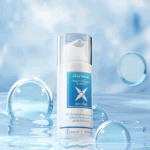Acne Serum

t-ZnO
Based on the excellent performance and outstanding characteristics of t-ZnO, when applied to the skin with acne, it has a high immune-responsive effect on top of the traditional astringent effect of ZnO, killing various viruses and bacteria.
Just add a trace amount of 1% to various semi-solid skin care matrices (such as creams, essences, etc.), and you can quickly cure severe acne and skin inflammation with a small amount (about 10 grams), without contraindications, no drug resistance, and can be used continuously.
Serum Matrix
This product uses the highest quality sodium hyaluronate: <100 kDa.
It can penetrate deeper into the skin to provide moisture and hydration. Thus, it makes the skin look fuller and reduces wrinkles. It keeps the skin in a youthful state. And it has multiple benefits such as promoting skin repair and regeneration, increasing skin elasticity and firmness, anti-aging effects, and strengthening the skin barrier.
Our acne serum is composed of t-ZnO and sodium hyaluronate: <100kDa,combining multiple properties such as anti-inflammatory, antibacterial, and healing, and is particularly effective for inflammatory acne caused by bacteria.
Its formula can deeply clean pores and prevent the formation of new blockages; at the same time, it has the functions of shrinking pores, smoothing the skin, promoting cell regeneration, and accelerating scar healing and fading. It can effectively relieve redness and swelling, treat skin rashes, pimples, pustules, nodules, cysts, acute and chronic acne, as well as stubborn acne, and is suitable for the care and repair of various skin inflammations.
All-natural ingredients: Our serum uses a large amount of natural extracts to ensure the safety of sensitive skin.
Non-irritating formula: After strict skin testing, it is confirmed that it does not contain chemicals that are harmful to the skin or may cause irritation.
Fast absorption: The lightweight texture design ensures that the product can quickly penetrate the skin with no greasy feeling left.
Multiple protections: Not only against acne, but also with multiple skin protection functions such as antioxidant and UV protection.
Suitable for all skin types: Although mainly for acne-prone skin, it can be used by all skin types without causing burden.
Our acne serum can effectively create a stable slightly acidic or pH neutral environment for the skin.


